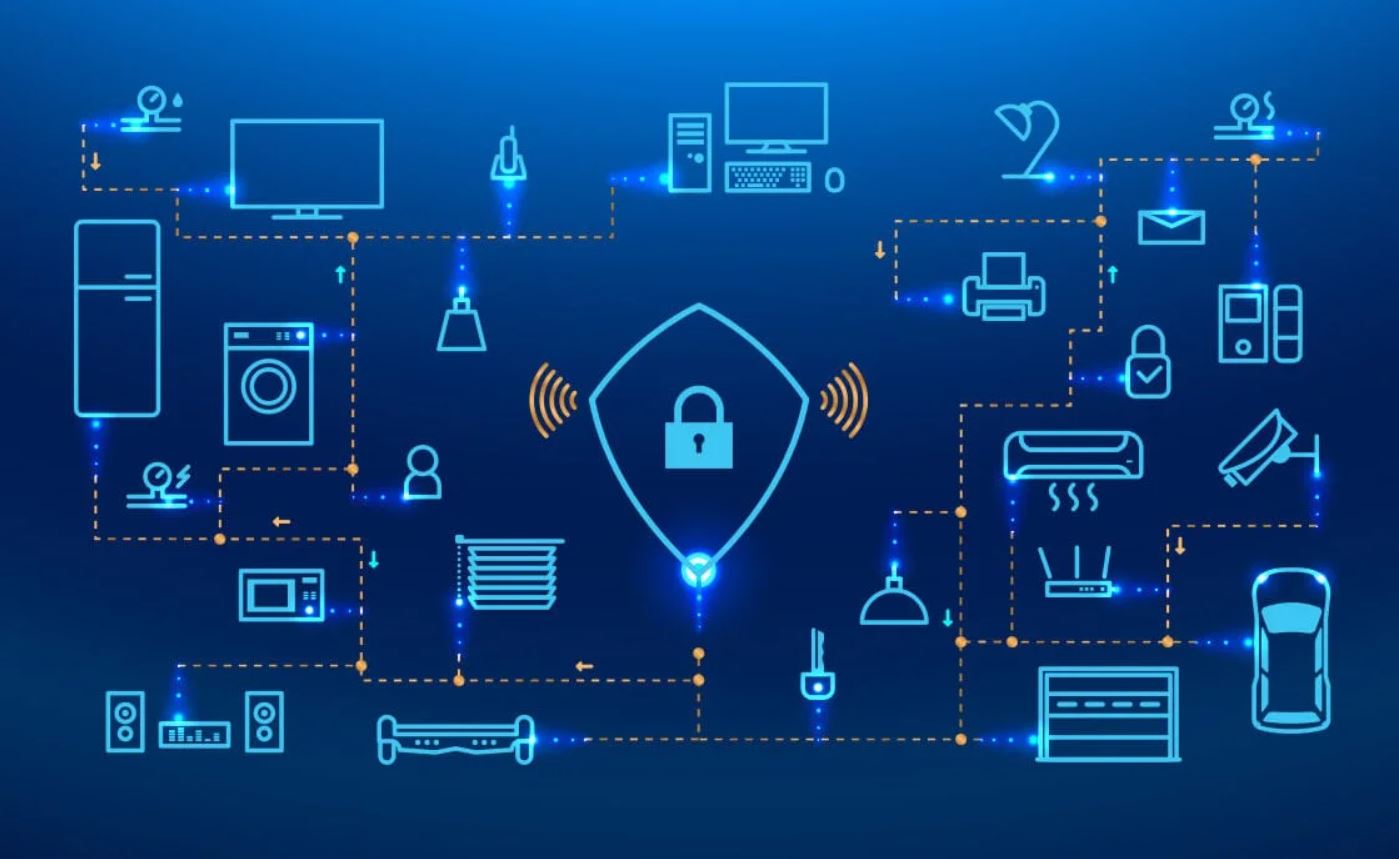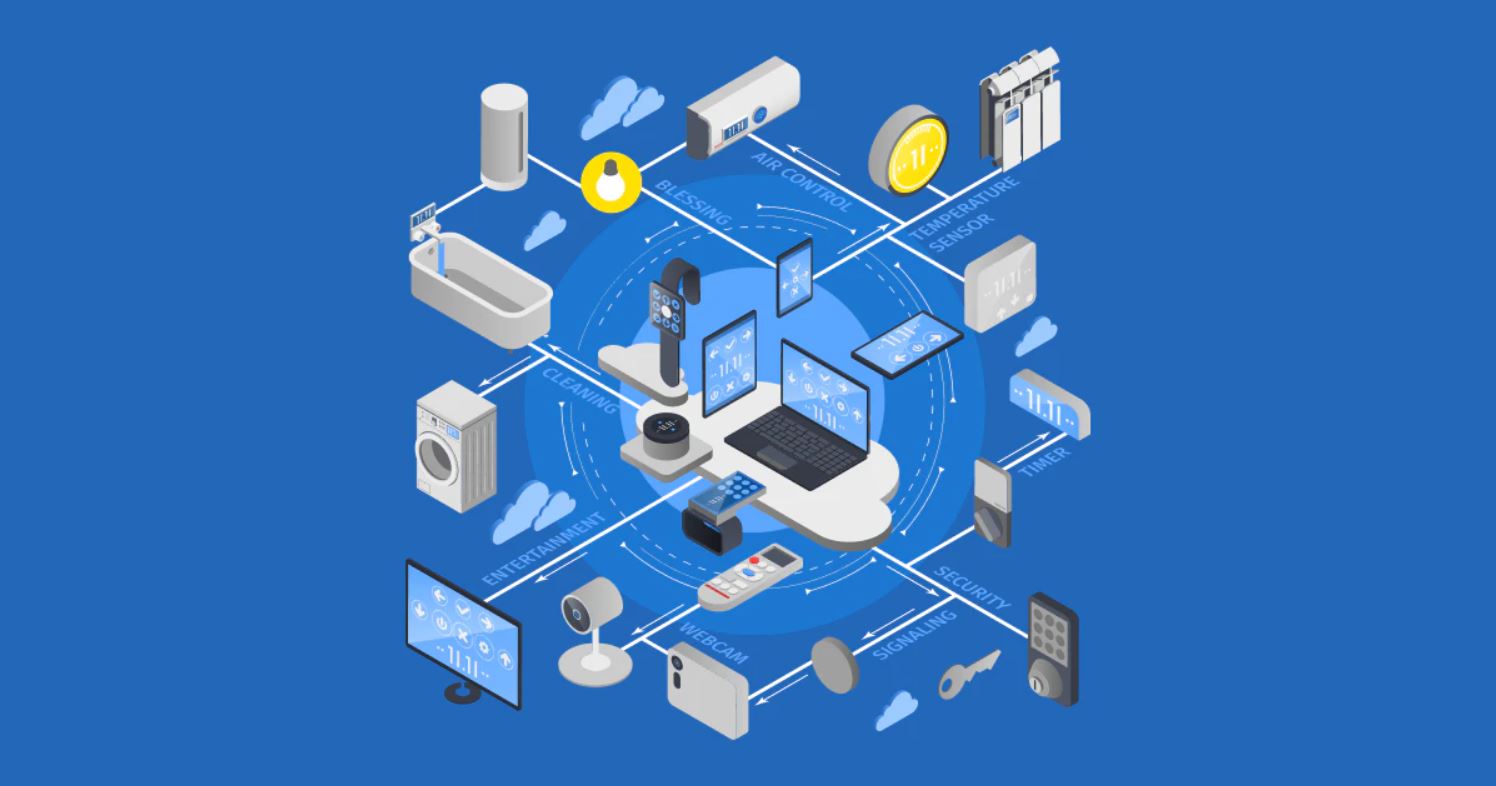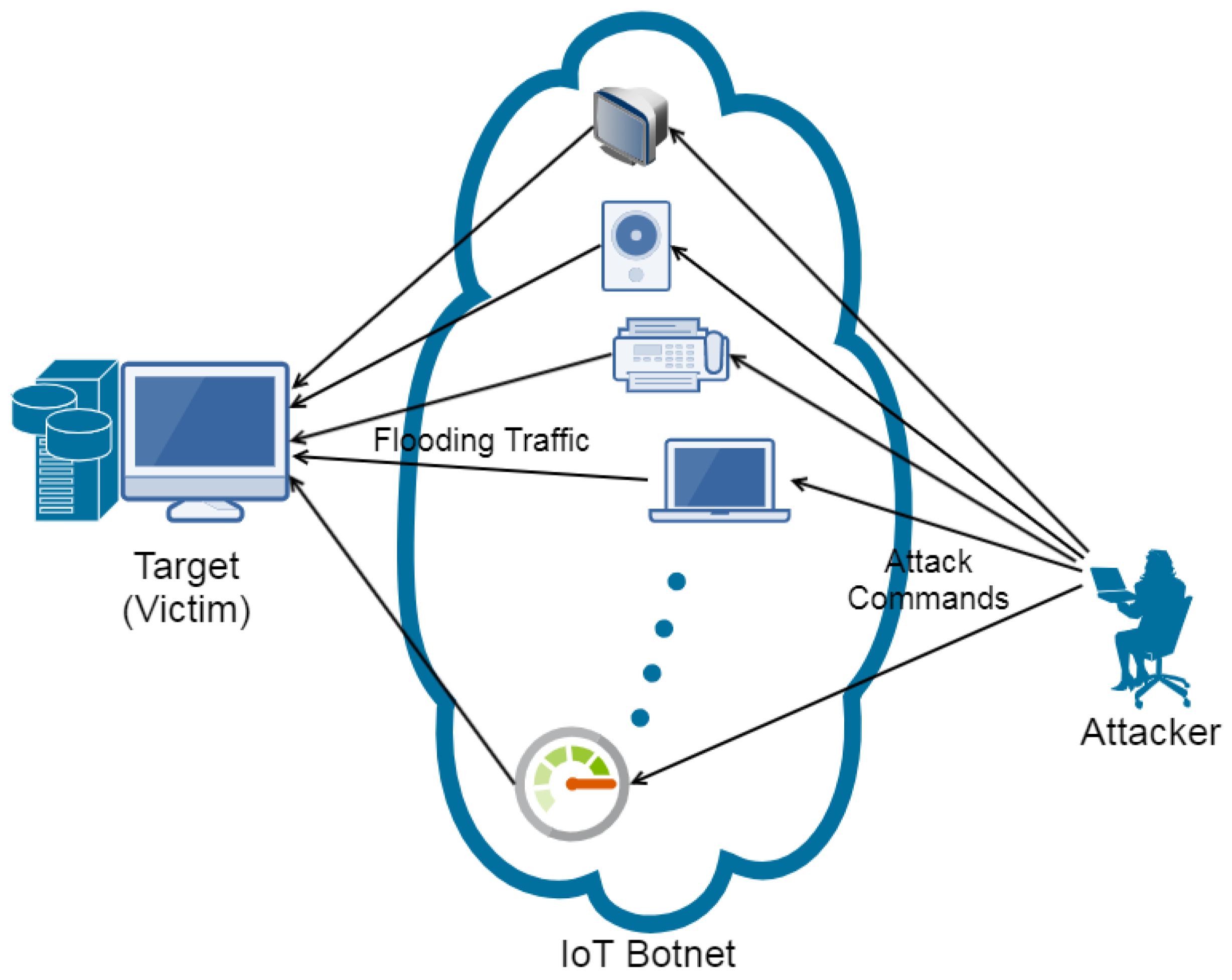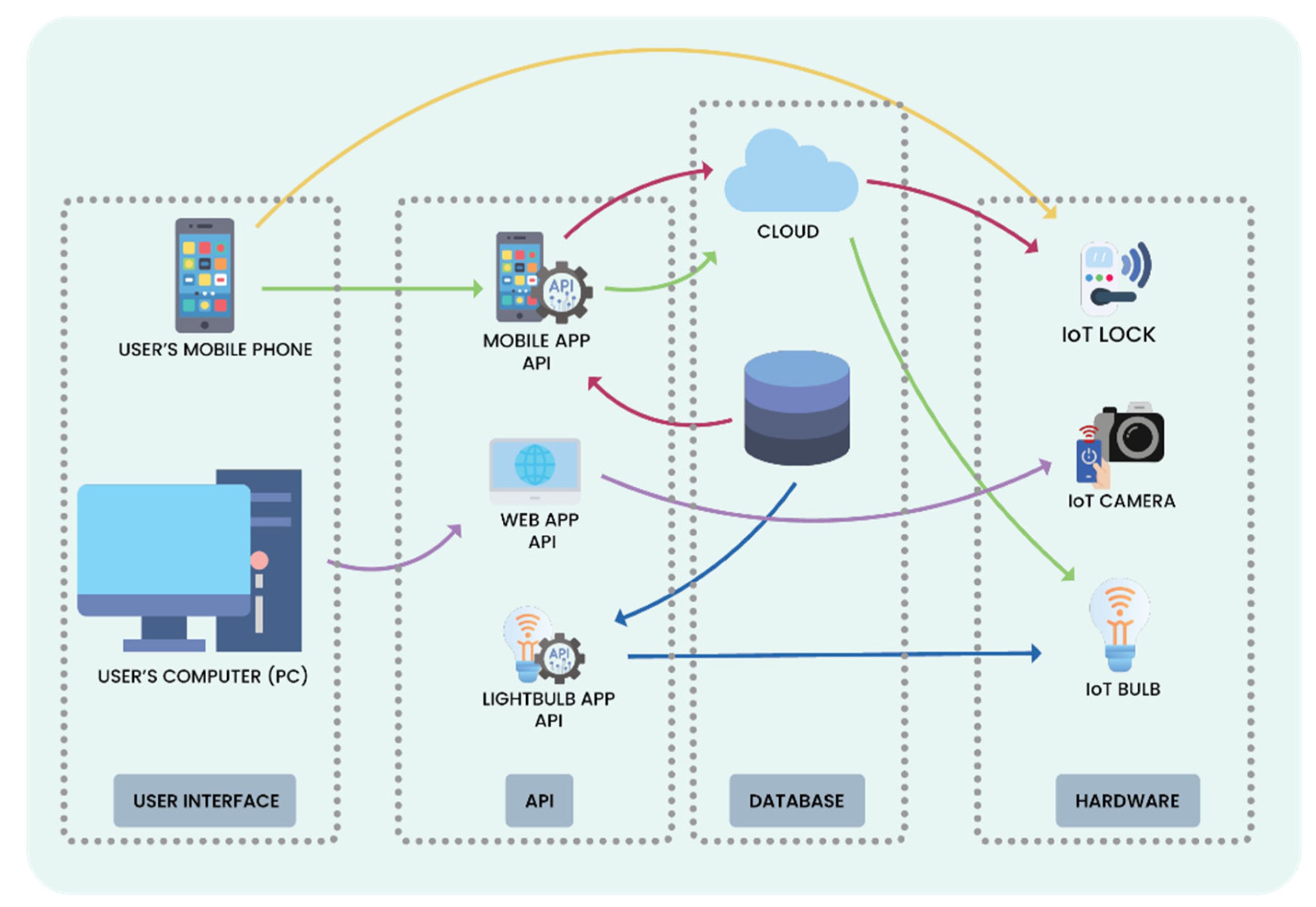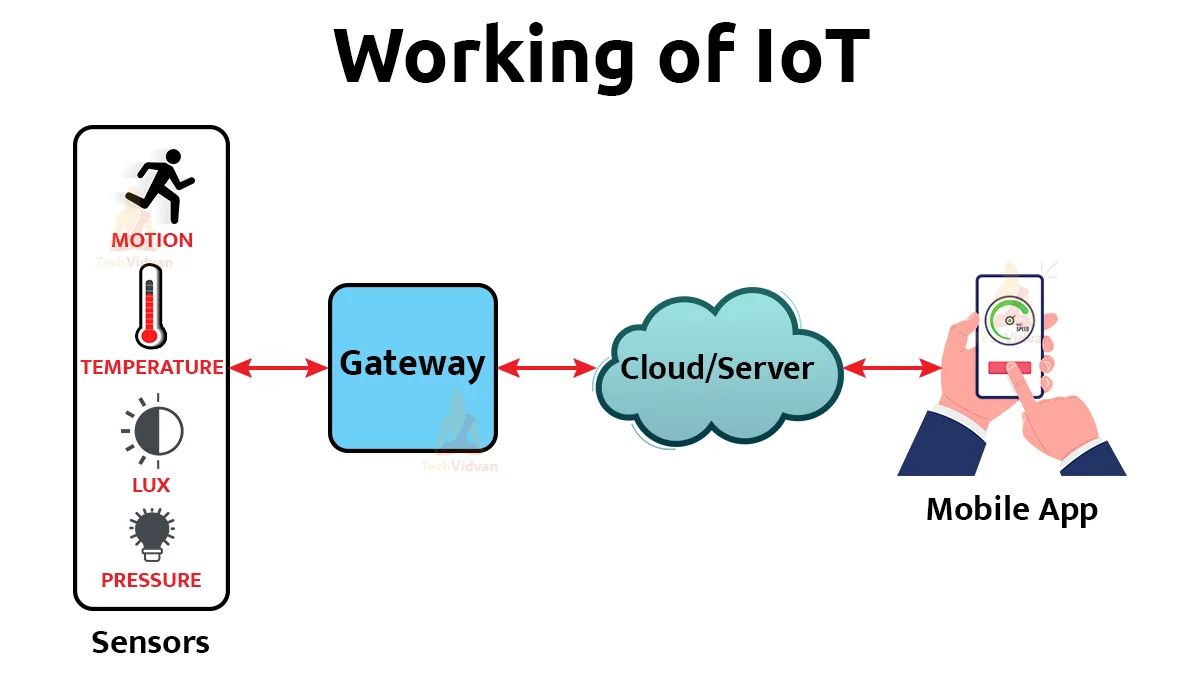Introduction
The Internet of Things (IoT) has revolutionized the way we live our lives, connecting devices and systems in ways previously unimaginable. From smart homes to wearable devices, IoT technology offers convenience and efficiency on a whole new level. However, with this increased connectivity comes the need for heightened security. Ensuring the security of our IoT devices is essential in protecting our privacy, safeguarding our data, and preventing unauthorized access.
In today’s digital age, where cyber attacks are becoming more sophisticated, securing IoT devices has become a top priority. The consequences of a breach can be severe, ranging from compromised personal information to remote manipulation of critical infrastructure. With hackers constantly scanning networks for vulnerabilities, it’s crucial for individuals and businesses to take proactive steps to protect their IoT devices.
This guide will explore the importance of IoT security and provide practical tips to help you secure your IoT devices and networks. By following these best practices, you can enhance the overall security of your IoT ecosystem and minimize the risk of cyber threats.
Why is IoT Security Important?
As the number of IoT devices continues to grow exponentially, so does the potential for cybersecurity risks. IoT security is crucial for several reasons:
- Data Privacy: IoT devices collect and transmit vast amounts of personal data. This includes everything from sensitive healthcare information to personal preferences and daily routines. Without proper security measures, this data can be intercepted by malicious actors and used for identity theft, fraud, or other nefarious purposes.
- Financial Loss: A successful IoT attack can result in financial losses for individuals and businesses. Hackers can exploit vulnerabilities in IoT devices to gain unauthorized access to bank accounts, credit card information, or even control financial systems. The aftermath of a cyber attack can be costly and time-consuming to resolve.
- Physical Safety: Many IoT devices are integrated into critical infrastructure systems, such as transportation, healthcare, and energy. A security breach in these systems can have severe consequences, leading to physical harm or even loss of life. It is essential to ensure the integrity and security of IoT devices to protect public safety.
- Network Security: Compromised IoT devices can be used as entry points to infiltrate an entire network. Once inside, hackers can gain access to other connected devices, compromising sensitive information, and disrupting regular operations. Strengthening IoT security helps protect the overall network infrastructure.
- Brand Reputation: A security breach involving IoT devices can damage the reputation of individuals and businesses. Customers need to trust that their data and privacy are protected when using IoT products and services. Failure to secure IoT devices can lead to a loss of customer trust and ultimately impact the success of a business.
In summary, IoT security is vital to protect personal information, prevent financial losses, ensure physical safety, maintain network security, and safeguard brand reputation. By implementing robust security measures, individuals and organizations can mitigate the risks associated with IoT devices and enjoy the benefits of a connected world.
Assessing your IoT Devices
Before implementing any security measures, it’s important to assess the security status of your IoT devices. Here are some steps you can take to assess the security of your IoT devices:
- Identify Your IoT Devices: Take inventory of all the IoT devices connected to your network. This includes smart home devices, wearable gadgets, security cameras, and any other internet-connected devices. Make a list to keep track of the devices and their security features.
- Research Device Manufacturers: Look up the manufacturers of your IoT devices and research their reputation for security. Check if they have a history of addressing vulnerabilities promptly and releasing regular firmware updates.
- Check for Known Vulnerabilities: Stay informed about any known vulnerabilities or security vulnerabilities associated with your IoT devices. Websites like the National Vulnerability Database (NVD) and the Common Vulnerabilities and Exposures (CVE) can provide valuable information.
- Review Default Settings: Many IoT devices come with default settings that are not adequately secure. Check if your devices have default usernames, weak passwords, or unnecessary open ports. Change default settings to enhance security.
- Examine Device Security Features: Review the security features of your IoT devices. Check if they support encryption, secure firmware updates, and two-factor authentication. Devices with stronger security features offer better protection against potential threats.
- Assess Third-Party Apps and Services: If you are using third-party apps or services to control your IoT devices, assess their security features as well. Ensure that the apps or services are from reputable sources and have proper encryption protocols in place.
- Perform Vulnerability Scans: Use vulnerability scanning tools to identify any potential weaknesses in your IoT devices. These scans will help you detect vulnerabilities and take appropriate actions to address them.
By assessing your IoT devices, you gain a better understanding of their security posture and can identify areas that need improvement. This evaluation forms the foundation for implementing effective security measures that protect your devices and the data they collect.
Evaluating Security Vulnerabilities
Once you have assessed your IoT devices, the next step is to evaluate their security vulnerabilities. By identifying potential weaknesses, you can take proactive steps to mitigate risks and enhance the security of your IoT ecosystem. Here are some key aspects to consider when evaluating security vulnerabilities:
- Known Vulnerabilities: Stay informed about any known vulnerabilities specific to your IoT devices. Manufacturers often release security advisories or patches to address these vulnerabilities. Regularly check for updates and apply them promptly.
- Unpatched Firmware: Outdated firmware can leave your IoT devices vulnerable to attacks. Check if the manufacturer regularly releases firmware updates and if your devices are running the latest version. Update any devices with outdated firmware to benefit from enhanced security features.
- Weak or Default Passwords: Many IoT devices come with default passwords that are easily guessable or well-known. Change default passwords to strong, unique passwords for each device. Avoid using common and easily guessable passwords. Utilize a password manager to securely store your passwords.
- Encryption: Evaluate if your IoT devices utilize encryption for data transmission. Encryption ensures that the information communicated between devices and networks is secure and cannot be easily intercepted or deciphered by unauthorized individuals.
- Open Ports: Check if any unnecessary ports are open on your IoT devices. Open ports can provide entry points for attackers to gain unauthorized access. Close any unnecessary ports or ensure they are properly secured with strong passwords and encryption.
- Physical Security: Assess the physical security of your IoT devices. Ensure that they are not easily accessible to unauthorized individuals. If the devices are located in public areas, consider implementing additional physical security measures to prevent tampering or theft.
- Remote Access: Evaluate if your IoT devices provide remote access capabilities. While convenient, remote access can introduce vulnerabilities. If enabled, ensure that secure protocols are used and that you have strong passwords and additional authentication measures in place.
By thoroughly evaluating the security vulnerabilities of your IoT devices, you can identify potential weaknesses and take appropriate measures to strengthen security. Regularly assess and update the security posture of your devices to stay ahead of emerging threats and protect your IoT ecosystem.
Updating Firmware and Software
Regularly updating the firmware and software of your IoT devices is critical for maintaining their security. Manufacturers often release updates that address known vulnerabilities and introduce security enhancements. Here are some important considerations when updating firmware and software:
- Stay Informed: Keep track of firmware and software updates provided by the device manufacturers. Subscribe to their newsletters or follow their social media accounts to receive timely notifications about updates and security patches.
- Check for Updates: Take the initiative to regularly check for updates for your IoT devices. Visit the manufacturer’s website or use their software applications to determine if new updates are available.
- Set up Automatic Updates: Enable automatic updates whenever possible. This ensures that your devices receive the latest security patches without requiring manual intervention.
- Backup Before Updating: Before performing any firmware or software update, create a backup of your device’s data. In case anything goes wrong during the update process, you can restore your device to its previous state without losing important information.
- Download Updates from Trustworthy Sources: When downloading firmware or software updates, do so only from official manufacturer websites or trusted sources. Avoid downloading updates from third-party sources as they may contain malware or be altered to compromise your device.
- Follow Installation Instructions: Read and follow the installation instructions provided by the manufacturer carefully. Improper installation can lead to device malfunctions or security vulnerabilities.
- Verify Firmware Authenticity: In some cases, hackers may distribute fake firmware updates to compromise devices. Before installing an update, verify its authenticity by cross-checking with the manufacturer or using embedded verification features.
- Keep Track of EOL Devices: End-of-life (EOL) devices may no longer receive updates or security patches from the manufacturer. It is important to identify such devices and consider replacing them with newer, supported models to maintain security.
Updating the firmware and software of your IoT devices is a crucial aspect of ensuring their security. By staying vigilant and regularly updating your devices, you can minimize the risk of security vulnerabilities and protect your IoT ecosystem from potential threats.
Creating Strong Passwords
Creating strong and unique passwords is essential for securing your IoT devices and protecting your sensitive information. Weak passwords can be easily guessed or cracked by hackers, jeopardizing the security of your IoT ecosystem. Here’s how you can create strong passwords:
- Length and Complexity: Use passwords that are at least 12 characters long, combining uppercase and lowercase letters, numbers, and special characters. The longer and more complex the password, the harder it is to crack.
- Avoid Personal Information: Avoid using easily guessable information in your passwords, such as your name, birthdate, or address. Hackers can easily find this information and use it to guess your password.
- Unique Passwords: Create a unique password for each IoT device and online account. Reusing passwords increases the risk of multiple accounts being compromised if one password is compromised.
- Password Managers: Consider using a password manager to generate and securely store your passwords. Password managers can generate complex passwords and remember them for you, so you don’t have to rely on your memory.
- Passphrases: Instead of using a single word, consider using a passphrase consisting of multiple words. Passphrases are easier to remember but provide a higher level of security.
- Avoid Common Patterns: Avoid using common patterns or sequences in your passwords, such as “123456” or “qwerty.” These patterns are easy for hackers to guess and should be avoided.
- Regularly Update Passwords: Regularly update your passwords, especially for critical accounts and IoT devices. Aim to change passwords every three to six months or whenever a security breach is reported.
- Two-Factor Authentication: Enable two-factor authentication (2FA) whenever possible. 2FA adds an extra layer of security by requiring a second form of verification, such as a unique code sent to your mobile device.
- Education and Awareness: Educate yourself and your family members about the importance of strong passwords and the risks of weak passwords. Spread awareness and encourage good password habits within your household.
By creating strong passwords and following best practices, you can significantly enhance the security of your IoT devices. Remember, a strong password is one of the first lines of defense against unauthorized access and potential security breaches.
Enabling Encryption
Enabling encryption is a crucial step in securing your IoT devices and protecting the data they transmit. Encryption ensures that the information exchanged between devices and networks is scrambled and only accessible by authorized parties. Here’s how you can enable encryption for your IoT devices:
- Use Secure Communication Protocols: Ensure that your IoT devices utilize secure communication protocols, such as HTTPS, TLS, or SSL. These protocols encrypt data during transmission, making it difficult for attackers to intercept and decipher the information.
- Secure Wi-Fi Connections: When connecting your IoT devices to Wi-Fi networks, make sure to use a secure network that utilizes encryption, such as WPA2 or WPA3. Avoid using open or public networks that lack encryption, as they can expose your device and data to potential threats.
- Implement End-to-End Encryption: End-to-end encryption ensures that data is encrypted at the source and can only be decrypted by the intended recipient. This approach prevents unauthorized access to data at any point during transmission.
- Encrypt Data Storage: Consider encrypting the data stored on your IoT devices. In case a device is lost or stolen, encryption will prevent unauthorized access to the stored data. Many IoT devices already have built-in encryption capabilities for data storage.
- Secure Boot Process: Verify if your IoT devices support secure boot technology. Secure boot ensures that only trusted and authenticated firmware is loaded during device startup, preventing the execution of malicious code or unauthorized firmware modifications.
- Use Device Authentication: Implement device authentication mechanisms to ensure that only authorized devices can connect and communicate with each other. This can involve using unique identifiers, digital certificates, or cryptographic keys to verify the authenticity of devices on the network.
- Keep Firmware and Software Updated: Regularly update the firmware and software of your IoT devices to take advantage of the latest security enhancements, bug fixes, and encryption protocols provided by the manufacturers.
- Perform Security Testing: Consider conducting regular security testing, including penetration testing and vulnerability assessments, to identify any potential weaknesses in the encryption methods used by your IoT devices. Address any vulnerabilities that are discovered promptly.
Enabling encryption is essential for protecting the privacy and confidentiality of your IoT data. By implementing encryption protocols and staying up-to-date with security best practices, you can ensure that your IoT devices communicate securely, reducing the risk of unauthorized access or data breaches.
Configuring Firewalls and Access Control
Configuring firewalls and access control is a critical step in securing your IoT devices and networks. Firewalls act as a barrier between your devices and potential threats, while access control allows you to define and manage who can access your devices and data. Here’s how you can configure firewalls and access control for your IoT ecosystem:
- Set up Network Firewalls: Install and configure firewalls at the network level to control incoming and outgoing traffic. Firewalls monitor and filter network traffic, blocking any unauthorized access attempts and potential threats.
- Enable Device-Level Firewalls: Some IoT devices have built-in firewalls. Ensure that these firewalls are enabled and configured properly to restrict access to your devices and protect them from unauthorized connections.
- Segment Your Network: Segment your IoT devices into separate network zones or VLANs (Virtual Local Area Networks). This segregation helps contain potential threats by limiting the communication between devices and minimizing the impact of a security breach.
- Configure Access Control Lists (ACLs): Utilize ACLs to control network traffic and define allowed or blocked communication paths for your IoT devices. ACLs provide an additional layer of security by specifying which IP addresses, ports, protocols, or applications can access your devices or network.
- Implement Least Privilege: Follow the principle of least privilege when configuring access control. Only grant the necessary access rights and permissions to individuals or devices on a need-to-know basis, reducing the attack surface and potential risk of unauthorized access.
- Secure Remote Access: If remote access is required for managing your IoT devices, ensure it is done securely. Use encrypted protocols, such as VPN (Virtual Private Network), to establish a secure connection and authenticate remote users before providing access to your IoT network.
- Regularly Review and Update Access Policies: Periodically review and update your access control policies to reflect any changes in your IoT ecosystem. Remove any unnecessary or outdated access permissions to maintain a strong control over who can access your devices and data.
- Monitor and Analyze Network Traffic: Employ network monitoring tools to keep track of network traffic and identify any suspicious activities or anomalies. Monitoring allows you to detect potential security breaches and respond to them promptly.
Properly configuring firewalls and access control measures enhances the security of your IoT devices and minimizes the risk of unauthorized access. By implementing these security measures, you can have better control over your IoT network and ensure the integrity and confidentiality of your devices and data.
Monitoring Network Traffic
Monitoring network traffic is a crucial aspect of securing your IoT ecosystem. By keeping a close eye on the data flowing through your network, you can detect potential threats, identify abnormal behavior, and take prompt action. Here are key steps to effectively monitor network traffic:
- Implement Network Monitoring Tools: Install network monitoring tools that can analyze and capture network traffic. These tools provide real-time visibility into the data packets traversing your network, helping you identify any unusual or suspicious activities.
- Establish a Baseline: Establish a baseline for normal network traffic patterns in your IoT ecosystem. This baseline can serve as a reference point against which you can compare and identify any deviations or anomalies that may indicate a security breach.
- Set up Alerts and Notifications: Configure alert systems within your network monitoring tools to notify you when unusual or suspicious network behavior is detected. These alerts can help you take immediate action to mitigate potential security threats.
- Monitor Device Communications: Track the communication patterns and data exchanges between your IoT devices. Verify that the devices are communicating only with authorized systems and services and are not engaged in any unauthorized or suspicious activities.
- Analyze Traffic Patterns: Regularly analyze the traffic patterns in your network to identify any sudden spikes in data volume or unexpected connections. Unusual patterns can indicate the presence of unauthorized devices, malware, or potential attacks.
- Monitor External Connections: Keep an eye on the external connections established by your IoT devices. Monitor the data being transmitted to and received from external servers or cloud services to ensure that sensitive information is protected and not compromised.
- Perform Intrusion Detection and Prevention: Implement intrusion detection and prevention systems to identify and block potential network intrusions. These systems analyze network traffic in real-time and can automatically respond to suspicious activities or known attack patterns.
- Regularly Update and Patch: Keep your network monitoring tools, as well as your IoT devices and network infrastructure, up to date with the latest patches and firmware releases. Regular updates help ensure that your monitoring systems stay effective against emerging threats.
- Train Staff on Network Security: Educate your team about the importance of monitoring network traffic and how to effectively use network monitoring tools. Provide training on identifying potential security threats and the actions to be taken when anomalies are detected.
By actively monitoring network traffic, you can proactively detect and respond to potential security events in your IoT ecosystem. Through continuous monitoring, you can maintain the integrity, confidentiality, and availability of your IoT devices, data, and network infrastructure.
Implementing Multi-Factor Authentication
Implementing multi-factor authentication (MFA) is an effective way to enhance the security of your IoT devices and systems. MFA adds an extra layer of protection by requiring users to provide multiple forms of verification before accessing their accounts. Here’s how you can implement MFA for your IoT ecosystem:
- Choose a Reliable MFA Method: Select a reliable MFA method that suits your needs and the capabilities of your IoT devices. Common MFA methods include SMS codes, email verification, biometric authentication (e.g., fingerprint or facial recognition), or hardware tokens.
- Enable MFA for Administrator Accounts: Start by implementing MFA for administrator accounts, which have elevated privileges and control over your IoT devices and systems. Adding an extra layer of authentication for administrative access significantly strengthens security.
- Set up User MFA: Extend MFA to user accounts that have access to sensitive information or critical functions. This ensures that even if a user’s password is compromised, an additional form of verification is required to access the account.
- Use Time-Based One-Time Passwords (TOTP): Consider using time-based one-time passwords as a form of MFA. TOTP generates a unique password that expires after a certain time, adding an additional layer of security to account authentication.
- Implement Biometric Authentication for Supported Devices: If your IoT devices support biometric authentication, such as fingerprint or facial recognition, utilize this feature as an additional factor for user authentication. Biometrics provide strong and convenient authentication.
- Utilize Hardware Tokens: Hardware tokens, such as USB keys or smart cards, offer an extra layer of security for MFA. Users are required to insert the token into a device or perform a specific action as part of the authentication process.
- Provide Training and Support: Educate users on the importance of MFA and guide them through the setup process. Offer support and resources to help users understand how to use MFA effectively and troubleshoot any issues.
- Regularly Review and Update MFA Settings: Periodically review and update MFA settings and configurations. Remove any unnecessary or inactive MFA methods and ensure that the chosen authentication methods are still considered secure and reliable.
- Monitor MFA Logs: Monitor and analyze MFA logs to detect any suspicious or failed authentication attempts. Monitoring these logs can help identify potential security threats or unauthorized access attempts.
By implementing multi-factor authentication, you add an extra layer of security to your IoT ecosystem. This significantly reduces the risk of unauthorized access and helps protect sensitive information and critical functions from being compromised by unauthorized individuals.
Securing Your IoT Network
Securing your IoT network is vital to protect your devices, data, and privacy. As IoT devices connect to your network, it’s important to take proactive measures to ensure their security. Here are key steps to help secure your IoT network:
- Change Default Network Settings: Change the default settings of your network devices, such as routers and switches, to enhance security. Customize default usernames, passwords, and network names to prevent unauthorized access to your network.
- Segment Your Network: Segment your network into separate subnetworks or VLANs (Virtual Local Area Networks) to isolate your IoT devices from other devices on your network. This helps contain potential threats and limits access to sensitive information.
- Implement Network Access Control: Use network access controls to regulate which devices can connect to your IoT network. This includes using MAC address filtering or implementing a whitelist of authorized devices.
- Monitor Network Traffic: Continuously monitor network traffic within your IoT network to detect any abnormal behavior or potential security breaches. Network monitoring tools can provide real-time visibility into the traffic patterns and alert you to any suspicious activity.
- Enable Network Encryption: Encrypt network traffic using protocols, such as WPA2 or WPA3, to protect the communication between your IoT devices and network infrastructure. Encryption helps ensure that data transmitted over the network cannot be easily intercepted or deciphered.
- Disable Unnecessary Network Services: Disable any unnecessary network services or features that are not required for your IoT devices. This reduces the attack surface and minimizes the potential vulnerabilities in your network.
- Regularly Update Network Firmware: Keep your network devices, such as routers and switches, up to date with the latest firmware updates provided by the manufacturers. Firmware updates often include security patches and feature enhancements.
- Use Intrusion Detection and Prevention Systems: Implement intrusion detection and prevention systems (IDPS) to monitor network traffic for any suspicious activities or known attack patterns. IDPS helps identify and respond to potential threats proactively.
- Implement Network Segregation: Separate your IoT devices into different subnets based on their functions or security requirements. This can help contain a compromised device and prevent it from affecting other devices or sensitive data within your network.
- Regularly Change Network Passwords: Regularly change the passwords for your network devices and Wi-Fi network. Use strong, unique passwords that are different from default or previously used passwords. Consider using a password manager to securely manage and generate passwords.
By taking these measures to secure your IoT network, you can mitigate risks and protect against unauthorized access or malicious activities. Remember to regularly review and update your network security settings to stay ahead of emerging threats and ensure the ongoing security of your IoT ecosystem.
Regularly Checking for Updates and Patches
Regularly checking for updates and patches is a crucial practice to maintain the security and functionality of your IoT devices. Manufacturers often release updates and patches to address security vulnerabilities, fix bugs, and improve device performance. Here’s why it’s important and how to ensure you stay up to date:
1. Security Enhancements: Updates and patches frequently include security enhancements to address known vulnerabilities. By regularly checking for updates, you ensure that your devices have the latest protections against emerging threats, reducing the risk of unauthorized access and data breaches.
2. Bug Fixes: Updates often include bug fixes that improve the overall functionality and stability of your IoT devices. These fixes can address performance issues, connectivity problems, or other software-related glitches, ensuring a smoother user experience.
3. New Features: Some updates may introduce new features or functionalities to enhance the capabilities of your IoT devices. Regularly checking for updates allows you to take advantage of these new features and explore additional options for utilizing your devices.
4. Manufacturer Support: By regularly updating your devices, you demonstrate to the manufacturer that you are actively engaged in maintaining the security and performance of their products. This can help ensure continued support and prompt assistance if issues arise.
To ensure you stay up to date with the latest updates and patches:
- Enable Automatic Updates: Whenever possible, enable automatic updates on your IoT devices. This ensures that you receive updates and patches without manual intervention, keeping your devices up to date with the latest security protections.
- Check Manufacturer Websites: Regularly visit the websites of your device manufacturers to check for available updates. Manufacturers often provide download links or update instructions on their support or downloads page.
- Subscribe to Notifications: Subscribe to email notifications or newsletters from your device manufacturers or reputable technology news sources. This way, you receive updates and patch release announcements directly in your inbox.
- Follow Social Media Channels: Follow the social media accounts of your device manufacturers. Manufacturers often use social media platforms to announce updates, security patches, or other important information related to their products.
- Regularly Check Device Settings: Explore the settings and menus of your IoT devices to find options for checking and installing updates. Some devices have built-in update features that allow you to manually initiate the update process.
- Establish a Regular Update Schedule: Create a routine to systematically check for updates and patches on your IoT devices. Set reminders on your calendar to ensure you don’t forget this crucial maintenance task.
By regularly checking for updates and patches, you ensure the security, stability, and optimal performance of your IoT devices. Keeping your devices up to date is an essential aspect of proactive cybersecurity hygiene and helps safeguard your IoT ecosystem from potential threats.
Limiting Physical Access
Limiting physical access to your IoT devices is a critical aspect of ensuring their security. By taking steps to prevent unauthorized individuals from physically accessing your devices, you reduce the risk of tampering, theft, or potential compromise of sensitive information. Here’s how you can limit physical access to your IoT devices:
- Secure Device Placement: Ensure that your IoT devices are physically placed in secure locations. If possible, keep them in locked cabinets, rooms, or areas with limited access to authorized personnel only.
- Control Physical Accessibility: Limit physical access to your devices by implementing physical barriers, such as locked doors, gates, or fences. Use access control systems or key card systems to ensure that only authorized individuals can enter the designated areas.
- Use Tamper-Evident Seals: Consider using tamper-evident seals or stickers on the openings of your IoT devices, such as USB ports or cover panels. These seals provide visible evidence of tampering, alerting you to potential security breaches.
- Monitor and Restrict Visitors: Keep a record of individuals who have access to your IoT devices and restrict entry to authorized personnel only. Implement visitor management systems or sign-in processes to track the individuals who have interacted with your devices.
- Disable Physical Interfaces: Disable physical interfaces or ports that are not required for the normal functioning of your IoT devices. This prevents unauthorized individuals from connecting rogue devices or accessing sensitive information via physical connection points.
- Secure Cabling and Wiring: Ensure that the cabling and wiring of your IoT devices are properly secured and hidden. This prevents unauthorized access or tampering with the physical connections of the devices.
- Implement Security Cameras: Install security cameras in areas where your IoT devices are located to monitor and record any suspicious activities. Visible cameras can also act as a deterrent to potential unauthorized access.
- Provide Employee Training: Educate employees and authorized personnel about the importance of physical security and the potential risks associated with unauthorized physical access. Train them on protocols for handling IoT devices and the procedures for reporting any suspicious activity.
- Implement Asset Tracking: Utilize asset tracking systems or inventory management tools to keep track of your IoT devices. This helps ensure that devices are accounted for and can assist in identifying any missing or stolen devices.
- Dispose of Devices Securely: When decommissioning or disposing of IoT devices, follow proper disposal procedures to prevent the potential retrieval of sensitive data. This may involve secure erasure of data, physical destruction of storage media, or partnering with certified e-waste recyclers.
By limiting physical access to your IoT devices, you enhance their security and reduce the risk of unauthorized tampering or access to sensitive information. Implementing these measures contributes to a comprehensive security strategy that protects your IoT ecosystem from physical threats.
Securing Your Wireless Network
Securing your wireless network is crucial for protecting your IoT devices and preventing unauthorized access to your network. Wireless networks, if not properly secured, can be vulnerable to attacks and unauthorized intrusions. Here are essential steps to secure your wireless network:
- Change Default Router Settings: Start by changing the default administrator username and password of your wireless router. Default credentials are well-known and can make it easier for attackers to gain unauthorized access to your network.
- Use Strong Network Passwords: Set a strong password for your Wi-Fi network. Use a combination of upper and lowercase letters, numbers, and special characters. Avoid using easily guessable passwords like your name or address.
- Enable Network Encryption: Enable Wi-Fi encryption protocols, such as WPA2 or WPA3, to encrypt your wireless network traffic. Encryption prevents unauthorized individuals from intercepting and deciphering the data transmitted over your network.
- Change Wi-Fi Network Name (SSID): Modify the default name (SSID) of your wireless network to a unique and non-identifying name. This helps limit the chances of attackers targeting your network.
- Disable SSID Broadcast: Disable the broadcast of your Wi-Fi network’s SSID. This prevents your network from being readily discoverable by unauthorized individuals scanning for available networks.
- Utilize MAC Address Filtering: Enable MAC address filtering on your wireless router to only allow specific devices with known MAC addresses to connect to your network. This adds an extra layer of authentication for device access.
- Manage Guest Network: If your router supports a guest network feature, create a separate network for guest devices. Ensure that guest network access is isolated from your main network to prevent unauthorized access to your IoT devices.
- Regularly Update Router Firmware: Keep your wireless router firmware up to date. Manufacturers regularly release firmware updates that include security patches and feature enhancements.
- Disable Remote Administration: Disable remote administration of your wireless router unless necessary. This prevents unauthorized individuals from accessing and modifying your router settings remotely.
- Monitor Connected Devices: Regularly check the list of devices connected to your wireless network. Ensure that only authorized devices are connected, and promptly investigate any unknown or suspicious devices.
- Use a Firewall: Enable the built-in firewall feature on your wireless router or install a separate hardware or software firewall to provide an additional layer of network security.
- Regularly Review Router Logs: Review the logs and event history of your router to identify any unusual or suspicious activities. Monitoring router logs can help you detect potential security breaches and take appropriate action.
By implementing these measures to secure your wireless network, you enhance the overall security of your IoT devices and protect your network from unauthorized access and potential cyber threats.
Encrypting Data Transmissions
Encrypting data transmissions is a fundamental aspect of securing your IoT devices and protecting the privacy and integrity of the information being communicated. Encryption ensures that data is transformed into a scrambled format, making it unreadable to unauthorized individuals. Here’s why encrypting data transmissions is essential and how you can implement it:
1. Preventing Unauthorized Access: Encryption prevents unauthorized individuals from intercepting and deciphering the data transmitted between your IoT devices and the network they are connected to. It adds a layer of protection, ensuring that only authorized recipients can access and understand the information.
2. Safeguarding Sensitive Information: Many IoT devices collect and transmit sensitive information, such as personal data, payment details, or confidential business information. Encrypting data transmissions ensures that this information remains confidential and cannot be accessed or tampered with by unauthorized entities.
3. Protecting Against Man-in-the-Middle Attacks: Data transmitted without encryption can be vulnerable to attacks, such as man-in-the-middle attacks. These attacks involve intercepting and altering data as it travels between devices and networks. Encrypting data transmissions mitigates the risk of such attacks by ensuring that data remains secure during transit.
To implement data encryption for your IoT devices:
- Use Secure Communication Protocols: Ensure that your IoT devices utilize secure communication protocols, such as HTTPS, TLS, or SSL. These protocols encrypt the data transmitted over the network, making it difficult for attackers to intercept and decipher the information.
- Implement End-to-End Encryption: Utilize end-to-end encryption for sensitive communications. End-to-end encryption ensures that data is encrypted at the source device and can only be decrypted by the intended recipient, providing an additional layer of security.
- Secure Wireless Network: Implement strong encryption protocols, such as WPA2 or WPA3, for your wireless network. This ensures that data transmitted wirelessly between your IoT devices and the network remains encrypted and protected.
- Encrypt Data at Rest: Consider encrypting the data stored on your IoT devices to protect it from unauthorized access if the device is lost, stolen, or compromised. Many devices provide options for encryption at rest to secure data on storage media.
- Utilize Virtual Private Networks (VPNs): If remote access to your IoT devices is necessary, use a VPN to establish a secure, encrypted connection between the remote device and your network. VPNs add an extra layer of privacy and encryption for data transmissions.
- Encrypt Cloud Data Transfers: If your IoT devices send data to the cloud, ensure that the data transfers are encrypted, ideally using strong encryption protocols. This maintains the confidentiality of the data as it travels from your devices to the cloud servers.
- Regularly Update Encryption Protocols: Stay up to date with the latest advancements in encryption protocols and algorithms. Regularly update your IoT devices and network infrastructure to use the most secure encryption methods available.
- Train Stakeholders on Encryption: Educate employees, users, and other stakeholders involved in your IoT ecosystem about the importance of encryption and its role in securing data transmissions. Train them on best practices for using encrypted communications and handling encrypted data.
By encrypting data transmissions, you ensure the confidentiality, integrity, and privacy of the information shared between your IoT devices and networks. Implementing encryption measures is vital in minimizing the risk of unauthorized access, tampering, and data breaches.
Utilizing Virtual Private Networks (VPNs)
Using a Virtual Private Network (VPN) is an effective way to enhance the security and privacy of your IoT devices and their data transmissions. A VPN creates a secure, encrypted connection between your devices and the internet, ensuring that your online activities are protected from prying eyes. Here’s why utilizing VPNs for your IoT ecosystem is beneficial and how to implement them:
1. Secure Data Transmission: VPNs encrypt the data transmitted between your IoT devices and the network they are connected to. This encryption ensures that your data remains private and secure, even when using public or untrusted networks.
2. Protection from Eavesdropping: By using a VPN, you prevent potential eavesdroppers from monitoring your network traffic. The encrypted connection established by the VPN prevents unauthorized individuals from intercepting and deciphering your data.
3. Bypassing Network Restrictions: In some cases, IoT devices may encounter network restrictions that limit their access or functionality. By utilizing a VPN, you can bypass these restrictions and access network resources that might otherwise be unavailable.
4. Anonymity and Privacy: VPNs provide anonymity by masking your IP address and location. This makes it more challenging for third parties to track and identify your online activities, enhancing your privacy and reducing the risk of surveillance.
To implement a VPN for your IoT devices:
- Choose a Reputable VPN Service: Select a reliable and reputable VPN service provider. Consider factors such as security protocols, server locations, customer reviews, and compatibility with your IoT devices.
- Install VPN Applications: Install VPN applications or configure VPN settings on your IoT devices. Most VPN providers offer applications for various devices and operating systems, making it easy to set up VPN connections.
- Configure VPN Settings: Follow the instructions provided by your VPN service provider to configure the necessary settings on your IoT devices. This typically involves entering your VPN credentials and selecting server locations.
- Select Server Locations: Choose VPN server locations strategically based on your requirements. For optimal performance, select servers that are geographically close to your IoT devices and have a good reputation for speed and reliability.
- Enable VPN Auto-Connect or Persistent Connection: Configure the VPN software to automatically connect or maintain a persistent connection whenever your IoT devices are connected to the internet. This ensures that your devices are always protected by the VPN.
- Regularly Update VPN Software: Keep your VPN software up to date by installing the latest updates and patches provided by the VPN service provider. Updates often include security enhancements and bug fixes.
- Ensure VPN Compatibility: Verify that your IoT devices are compatible with the VPN technology you are using. Some devices may require additional configuration or support specific VPN protocols.
- Educate Users on VPN Usage: Train users, employees, and other stakeholders on the proper use of VPNs. Ensure they understand the importance of using VPNs when connecting IoT devices to external networks and provide guidelines for secure VPN practices.
By utilizing a VPN for your IoT ecosystem, you significantly enhance the security, privacy, and integrity of your data transmissions. A well-implemented VPN ensures that your IoT devices have a secure and encrypted connection, even when accessing the internet through untrusted networks.
Regularly Backing Up Data
Regularly backing up data is crucial for preserving the integrity and availability of your IoT device data. Accidental deletions, hardware failures, malware attacks, or other unforeseen events can result in data loss. By implementing a regular data backup strategy, you can protect your valuable information and quickly recover in the event of a data loss incident. Here’s why regularly backing up data is important and how to do it effectively:
1. Data Recovery: Regular backups ensure that you have a copy of your data to restore from in the event of data loss. Whether due to user error or a system failure, backups provide an added layer of protection against irrevocable data loss.
2. Protection from Malware and Cyber Attacks: In the unfortunate event of a malware or cyber attack targeting your IoT devices, having backups ensures the availability of clean and unaffected data. You can restore your devices to a previous, uninfected state and minimize the impacts of the attack.
3. Accidental Data Deletion: Humans can inadvertently delete important data. Backing up data regularly allows you to restore any deleted information quickly and easily, reducing the risk of permanent loss.
4. Faulty Hardware: IoT devices, like all electronic devices, are prone to hardware failures. Regular backups enable you to recover your data onto new or repaired devices, ensuring minimal disruption to operations.
To effectively back up your IoT device data:
- Identify Critical Data: Determine the critical data that needs to be backed up. This may include configuration settings, sensor data, device logs, or any other information that is essential to your IoT operations.
- Establish a Backup Schedule: Create a regular backup schedule based on the frequency of data changes and the importance of the data. Consider daily, weekly, or monthly backups, depending on your specific needs and the volume of data being generated.
- Select Backup Methods: Depending on your IoT devices and infrastructure, choose appropriate backup methods. This may include cloud-based backups, local storage backups, or a combination of both.
- Automate Backup Processes: Consider automating the backup processes to ensure consistency and reduce the risk of human error. Use backup tools or services that can automatically initiate backups according to your established schedule.
- Secure Backup Storage: Ensure that your backup storage is secure and adequately protected. Use encryption to secure the backup data, implement access controls to prevent unauthorized access, and regularly test the backup restoration process to validate its effectiveness.
- Monitor and Verify Backups: Regularly monitor the backup process to ensure that backups are being completed as planned. Perform periodic checks to verify the integrity and recoverability of the backup data.
- Off-Site Backups: Consider storing backups off-site or in geographically dispersed locations. Off-site backups provide an additional layer of protection in the event of physical damage or loss of data at the primary location.
- Test Restoration Procedures: Regularly test the restoration process to ensure that backups are viable and can be successfully restored. This helps identify any issues or gaps in your backup strategy and allows you to make necessary adjustments.
- Review and Update Backup Strategy: Periodically review and update your backup strategy as your IoT devices and data management requirements evolve. Stay current with technological advancements and adjust your backup procedures accordingly.
Regularly backing up your IoT device data safeguards against data loss and ensures that your critical information remains protected. By following a comprehensive backup strategy, you can quickly restore your IoT devices and maintain the integrity and availability of your data.
Disconnecting Unused Devices
Disconnecting unused devices is an important step in safeguarding your IoT ecosystem from potential security risks and minimizing the attack surface. IoT devices that are not actively in use can pose vulnerabilities and become targets for malicious actors. By disconnecting these unused devices, you reduce the potential entry points for unauthorized access and mitigate potential security threats. Here’s why disconnecting unused devices is important and how to effectively manage them:
1. Minimize Security Risks: Unused IoT devices that remain connected to the network can be vulnerable to security risks. These devices may not receive regular security updates or patches, making them more susceptible to exploits or attacks. Disconnecting them removes the potential security vulnerabilities they pose.
2. Reduce Internet Bandwidth: Unused devices that remain connected can consume valuable network bandwidth and resources. By disconnecting them, you free up bandwidth for active devices, improving overall network performance and ensuring optimal usage of resources.
3. Prevent Unauthorized Access: Disconnected devices are not accessible to unauthorized individuals or remote threats. This minimizes the risk of unauthorized access to your IoT devices, sensitive information, or the network itself.
4. Improve Network Management: Managing a smaller number of active devices is more efficient. By disconnecting unused devices, you simplify network management, monitoring, and troubleshooting processes, allowing you to focus on the devices that are actively in use.
To effectively manage and disconnect unused devices:
- Take Inventory: Create an inventory of all your IoT devices and identify the devices that are no longer actively used or necessary for your operations.
- Assess the Need: Evaluate the necessity of each unused device and determine if it can be permanently disconnected or repurposed for other uses.
- Unplug or Power Off: Physically unplug or power off the unused devices to disconnect them from the network. Ensure that the devices are properly stored or decommissioned according to your organization’s policies.
- Remove from Network Configuration: Remove the unused devices from your network configuration or control systems to prevent them from appearing as active devices or causing confusion during network management.
- Review Regularly: Regularly review your IoT device inventory and assess the need for ongoing connectivity. Consider establishing a schedule for periodic reviews and disconnecting any devices that are found to be unused or unnecessary.
- Securely Dispose of Devices: If you decide to decommission or dispose of unused IoT devices, ensure that they are properly wiped of any data and follow appropriate disposal procedures to protect sensitive information. This may involve securely erasing data or physically destroying the devices.
- Maintain Documentation: Keep accurate records of the devices that have been disconnected, their status, and any additional information related to their disconnection or disposal. This documentation helps maintain a clear overview of your IoT device landscape.
- Regular Auditing: Conduct regular audits of your IoT device inventory and network configuration to ensure that only necessary and active devices remain connected. This helps ensure effective device management and minimize unnecessary risks.
By disconnecting unused devices from your IoT ecosystem, you reduce potential security risks, improve network performance, and simplify device management. Regularly reviewing your device inventory and implementing necessary disconnections contribute to a more secure and efficient IoT environment.
Conclusion
Securing your IoT devices is essential to protect your privacy, data, and network infrastructure. By following best practices and implementing robust security measures, you can minimize the vulnerabilities and threats associated with IoT devices. Here’s a recap of the key steps discussed:
1. Assessing Your IoT Devices: Take inventory of your devices and evaluate their security features and vulnerabilities.
2. Evaluating Security Vulnerabilities: Regularly check for known vulnerabilities and apply security patches and updates promptly.
3. Updating Firmware and Software: Keep your devices’ firmware and software up to date to benefit from improved security and bug fixes.
4. Creating Strong Passwords: Use unique, complex passwords for your devices to prevent unauthorized access.
5. Enabling Encryption: Encrypt your data transmissions and enable end-to-end encryption whenever possible.
6. Configuring Firewalls and Access Control: Set up firewalls and access control to manage and restrict network traffic.
7. Monitoring Network Traffic: Continuously monitor network traffic for suspicious activities or anomalies.
8. Implementing Multi-Factor Authentication: Utilize multi-factor authentication to enhance user authentication and protect against unauthorized access.
9. Securing Your Wireless Network: Secure your Wi-Fi network with strong passwords, encryption protocols, and other network security measures.
10. Using Virtual Private Networks (VPNs): Implement VPNs to encrypt your data transmissions and protect your online activities.
11. Regularly Backing Up Data: Regularly back up your device data to minimize the impact of data loss incidents.
12. Disconnecting Unused Devices: Disconnect unused devices to reduce security risks and network vulnerabilities.
Remember to regularly review and update your security practices as new vulnerabilities and threats emerge. Stay informed about current trends and best practices in IoT security to keep your devices and data secure. With a proactive approach, you can enjoy the benefits of IoT technology while ensuring the privacy and security of your digital ecosystem.







